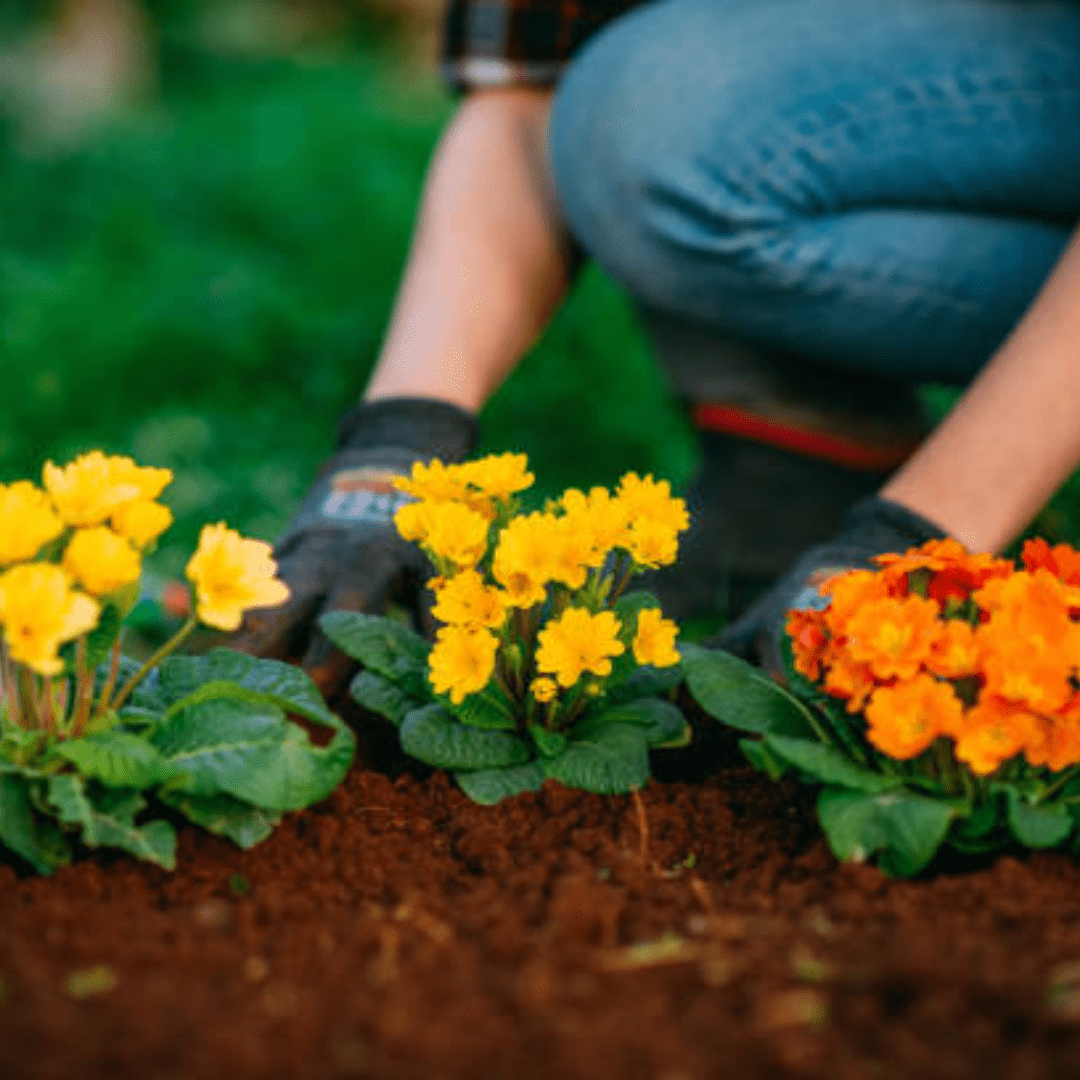Flowers for vegetable gardens.
Companion planting, the practice of growing different plants together for their mutual benefit, has gained popularity among gardeners. When it comes to vegetable gardens, incorporating flowers into the mix can offer numerous advantages. Flowers not only add beauty and visual appeal, but can also attract beneficial insects, repel pests, improve soil fertility, and even provide edible or medicinal benefits. In this article, I will explore the best flowers to enhance your vegetable garden, considering factors such as companion characteristics, climate suitability, and the specific benefits each flower offers. Whether you are a seasoned gardener or just starting out, this guide will help you choose the right flowers to maximize the health, productivity, and overall success of your vegetable garden.
This is a pinnable post. Tap or hover over any image in this post to pin to your Pinterest Boards.
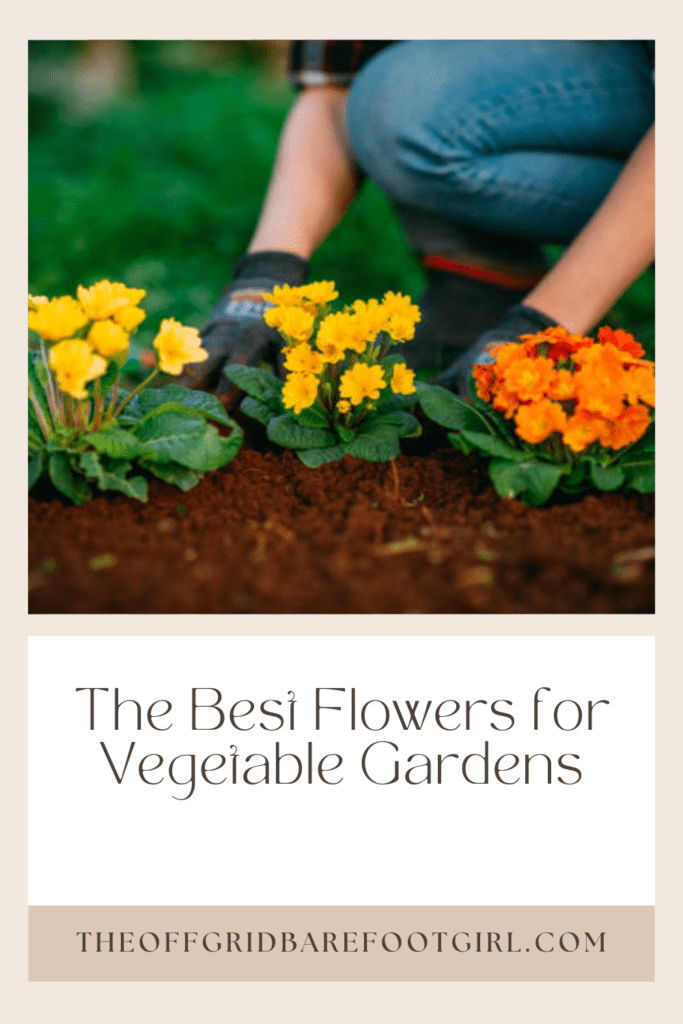
Introduction to Companion Planting In Vegetable Gardens
Understanding the Concept of Companion Planting
Companion planting is like playing matchmaker for your plants. It involves strategically planting certain flowers alongside your vegetables to create a harmonious and beneficial relationship. These flowers can help with pest control, improve soil quality, attract pollinators, and even enhance the flavors of your vegetables. It’s like a garden version of a support group – everyone helps each other thrive!
I wrote an informative post regarding companion planting with vegetables that you may find useful when planning your vegetable garden.
How to Do Companion Planting: Friends or Foes?
The Benefits of Incorporating Flowers In Vegetable Gardens
Adding flowers to your vegetable garden not only adds beauty and color, but also provides a range of benefits. Flowers can attract beneficial insects like ladybugs and bees, which help with pollination and keep pest populations in check. Some flowers also emit scents that repel common garden pests, acting as natural pest deterrents. Plus, they create a welcoming environment for birds and butterflies, adding to the overall ecosystem of your garden.
My Flowers for My Vegetable Garden Seed Haul!
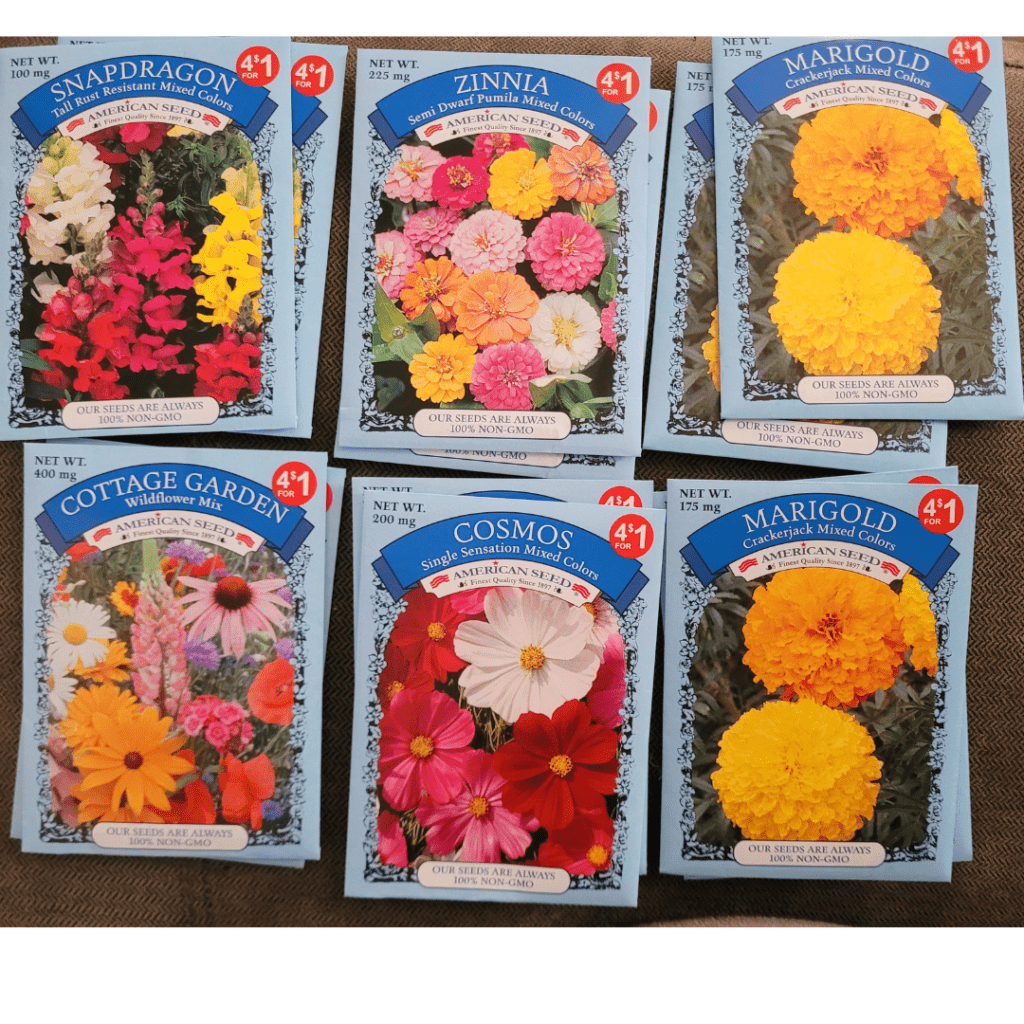
I get excited every year when planning my vegetable garden knowing that I have the perfect excuse to plant a variety of colorful flowers in my yard! You can buy a large variety of flowers and vegetable seeds at Dollar Tree for four for $1.25, which is a great deal! While these seeds may be cheap, they do produce an abundance of fruits, vegetables, and flowers for your garden!
Factors to Consider When Choosing Flowers for Vegetable Gardens
Climate and Growing Conditions
Before picking your floral sidekicks, consider your climate and growing conditions. Certain flowers thrive in specific climates, so choose ones that are well-suited to your region’s temperature and rainfall. Also, take into account the amount of sunlight your garden receives. Some flowers prefer full sun, while others can tolerate partial shade.
Complementary Flower Characteristics
When selecting flowers for your vegetable garden, look for ones that have complementary characteristics to your vegetables. For example, tall flowers can provide shade and wind protection for smaller plants. Flowers with deep roots can help break up compacted soil, improving drainage for your veggies. Picking flowers with different blooming periods ensures a continuous source of nectar and pollen for pollinators throughout the growing season.
Attracting Beneficial Insects
One of the key reasons to include flowers in your vegetable garden is to attract beneficial insects. Bees, butterflies, and ladybugs are all great pollinators and natural predators of pests. To entice these helpful critters, opt for flowers with open, shallow blooms that provide an easy landing pad and access to nectar. Avoid flowers with complex petal structures that may make it difficult for insects to reach their reward.
Marigolds: The Versatile Flower for Vegetable Gardens
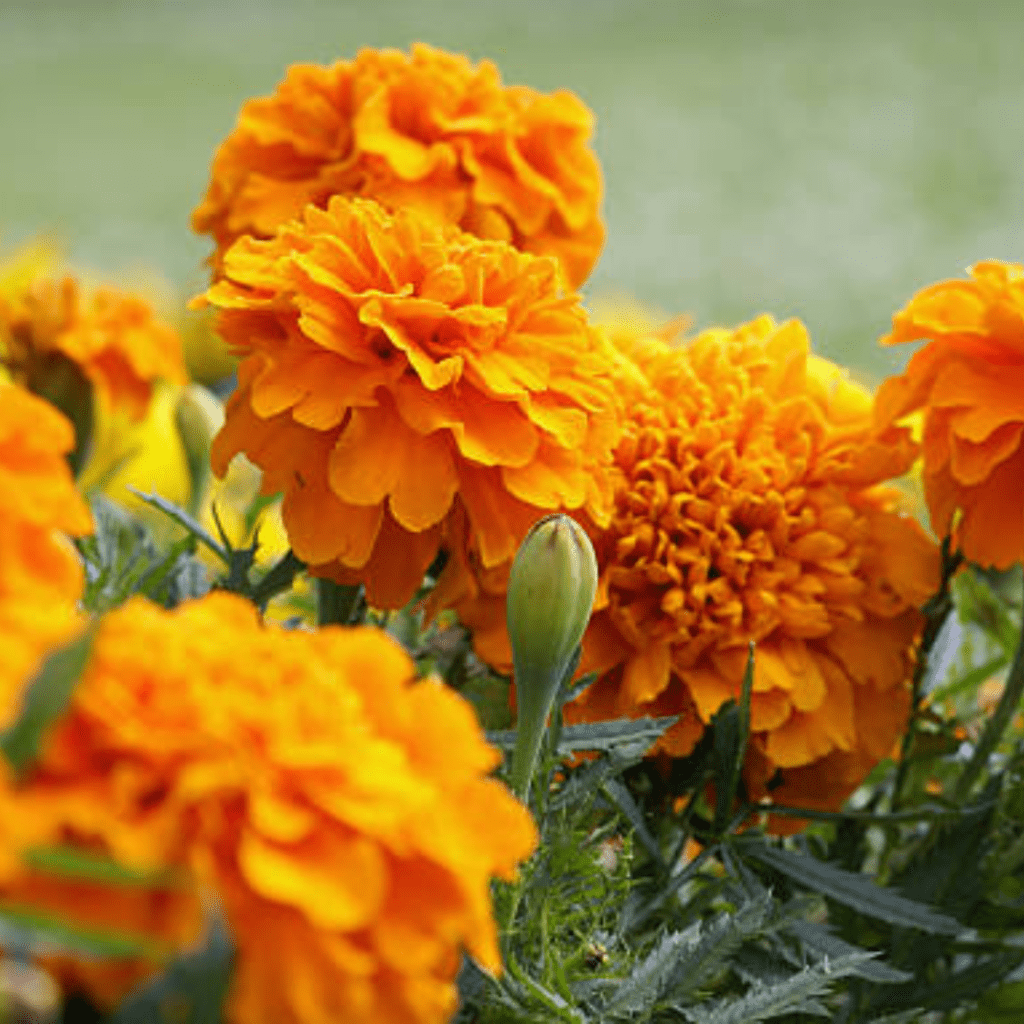
The Role of Marigolds In Pest Control
Marigolds are like the superheroes of the flower world. Not only do they add a vibrant touch to your garden, but they also repel pests like nematodes, aphids, and whiteflies. Their roots release compounds that are toxic to these common garden nuisances, effectively keeping them at bay.
Choosing the Right Marigold Varieties for Your Vegetable Garden
When selecting marigolds, opt for the French or African varieties. French marigolds, with their compact size and colorful blooms, are great for bordering your vegetable beds. African marigolds, on the other hand, have larger flowers and work well as a backdrop for taller plants. Both varieties are easy to grow from seeds or transplants and are available in a wide range of colors.
Planting and Care Tips for Marigolds
Marigolds are low-maintenance flowers that thrive in full sun and well-drained soil. They are relatively drought-tolerant, but it’s best to water them regularly to keep the soil evenly moist. Deadheading spent blooms will encourage continuous flowering. You can also save the dried flower heads to collect seeds for next year’s garden. Just remember to keep an eye out for pesky slugs, as they have a particular affinity for marigolds.
Nasturtiums: The Edible Flower for Vegetable Gardens
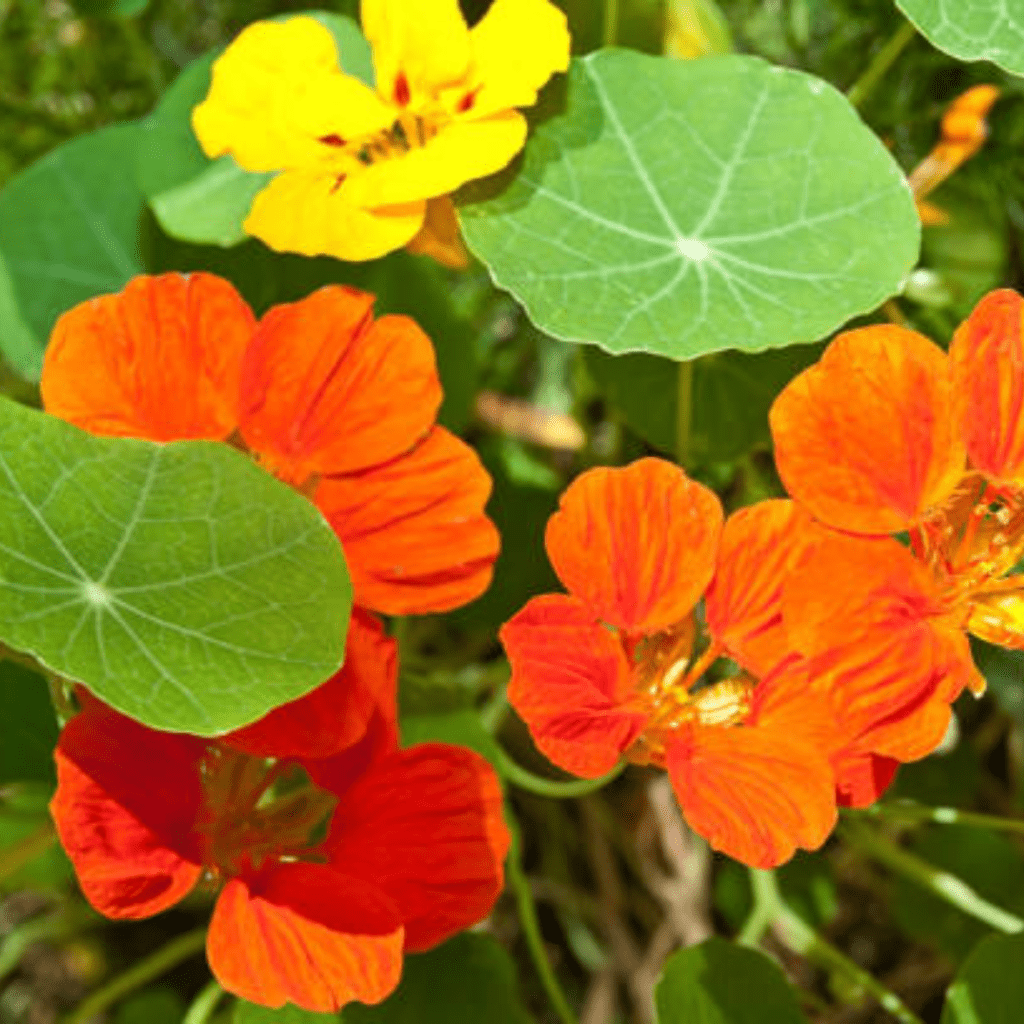
Exploring the Culinary Uses of Nasturtiums
Why settle for flowers that are just pretty when you can have ones you can eat too? Nasturtiums bring a unique twist to your vegetable garden by offering both beauty and flavor. Their vibrant blossoms and peppery leaves are not only visually appealing, but can also be used to add zing to your salads, soups, and even desserts.
Selecting Suitable Nasturtium Varieties for Your Vegetable Garden
Nasturtiums come in trailing and bush varieties, making them adaptable to different garden setups. Trailing varieties are perfect for hanging baskets or letting them cascade down walls or trellises. Bush varieties, with their compact growth, fit well in borders or as a ground cover. Whichever you choose, make sure to select edible varieties, as some nasturtiums are grown solely for ornamental purposes.
Growing and Maintaining Nasturtiums Alongside Vegetables
Nasturtiums are easy-going plants that thrive in poor soil conditions, making them ideal companions for your vegetables. They prefer full sun, but can tolerate partial shade. The best part? They naturally repel pests like aphids and squash bugs, acting as pest bodyguards for your precious veggies. Regular deadheading will promote continuous blooming, while occasional watering will keep them happy. Just be aware that nasturtiums can be enthusiastic self-seeders, so be prepared for their exuberant growth.
Calendula: The Medicinal Flower for Vegetable Gardens
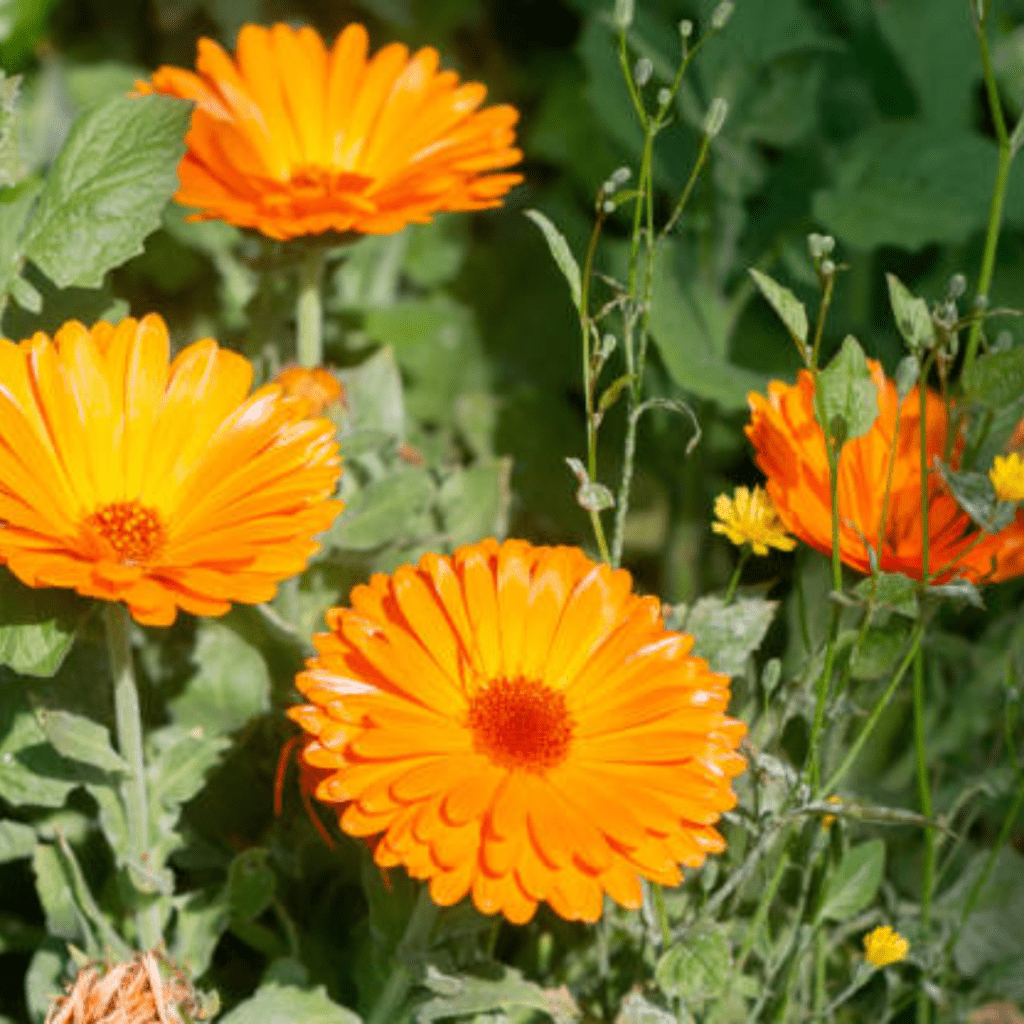
Understanding the Healing Properties of Calendula
If you’re looking to add a touch of natural medicine to your vegetable garden, look no further than calendula. This vibrant flower not only adds beauty to your garden, but also boasts some impressive healing properties. Calendula has been used for centuries to promote skin health, reduce inflammation, and even soothe minor burns and cuts. It’s like having a little doctor right in your backyard!
Choosing the Right Calendula Cultivars for Medicinal Purposes
Not all calendula plants are created equal when it comes to their medicinal benefits. To make the most of this flower’s healing properties, be sure to choose specific cultivars that are high in medicinal compounds. Look for varieties such as “Pacific Beauty” or “Calendula officinalis,” which have been bred for their therapeutic potency.
Integrating Calendula Into Your Vegetable Garden for Health Benefits
The beauty of calendula is that it can easily coexist with your vegetable plants and offer you health benefits at the same time. Consider planting it as a border around your vegetable beds or intermingling it among your crops. Not only will it attract beneficial insects and repel pests, but you’ll also have easy access to its medicinal flowers whenever you need them. It’s like having your own little garden pharmacy!
Sunflowers: The Beneficial Flower for Vegetable Gardens
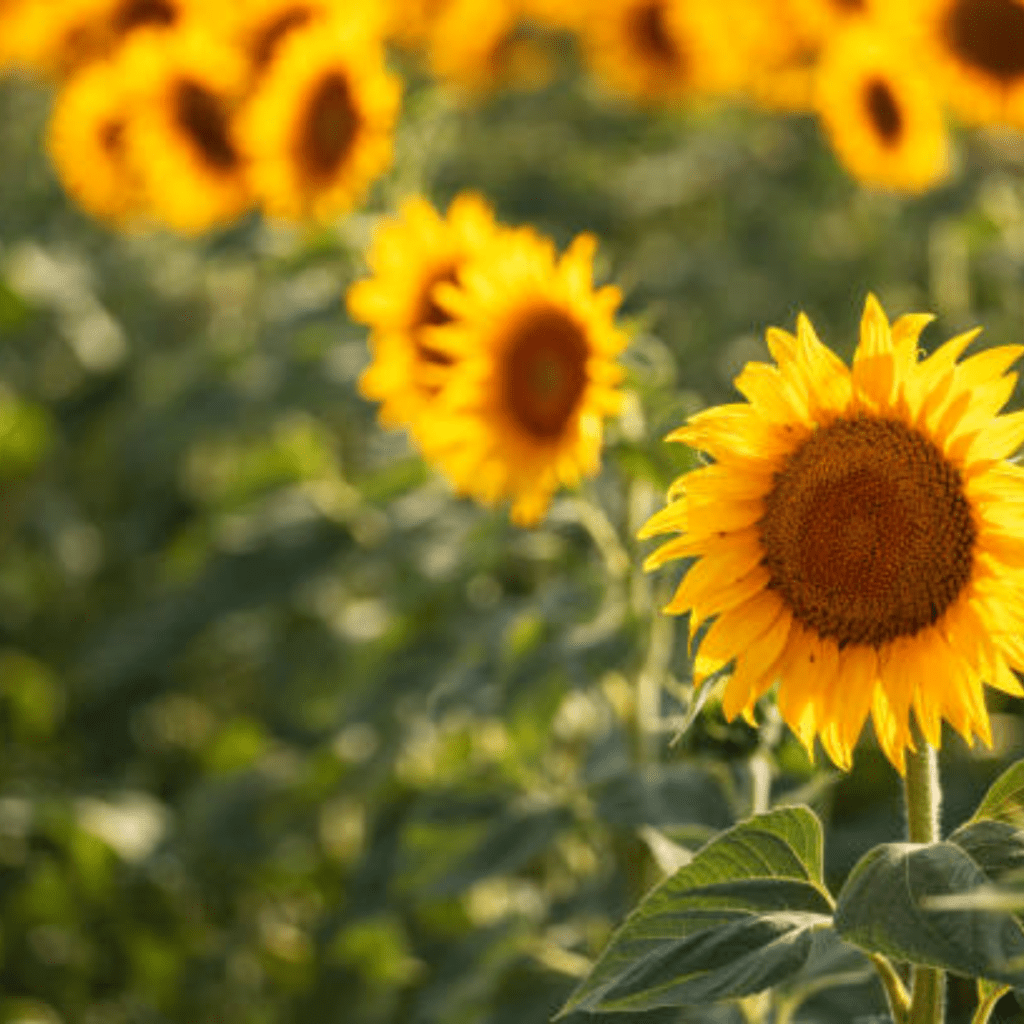
The Role of Sunflowers In Enhancing Soil Fertility
Sunflowers aren’t just cheerful and sunny additions to your garden; they also play a vital role in enhancing soil fertility. These tall and sturdy flowers have deep roots that can break up compacted soil, allowing for better water and nutrient absorption. As they grow, sunflowers also release organic matter into the soil, enriching it and creating a healthier growing environment for your vegetables.
Selecting Sunflower Varieties that Complement Vegetable Growth
When choosing sunflower varieties for your vegetable garden, opt for those that won’t overshadow or shade your crops. Look for dwarf or smaller varieties that won’t steal the spotlight from your precious vegetables. Additionally, consider selecting sunflowers with shorter flowering times, as this will prevent them from competing for nutrients and sunlight with your vegetable plants.
Planting and Maintenance Tips for Sunflowers
Planting sunflowers is a breeze! Simply sow the seeds directly into the ground after the last frost date, spacing them according to the variety’s requirements. Make sure to provide them with well-draining soil and ample sunlight for optimal growth. Once established, sunflowers are relatively low maintenance, requiring only occasional watering and removal of dead flowers to encourage continuous blooming.
Zinnias: The Pollinator-Attracting Flower for Vegetable Gardens
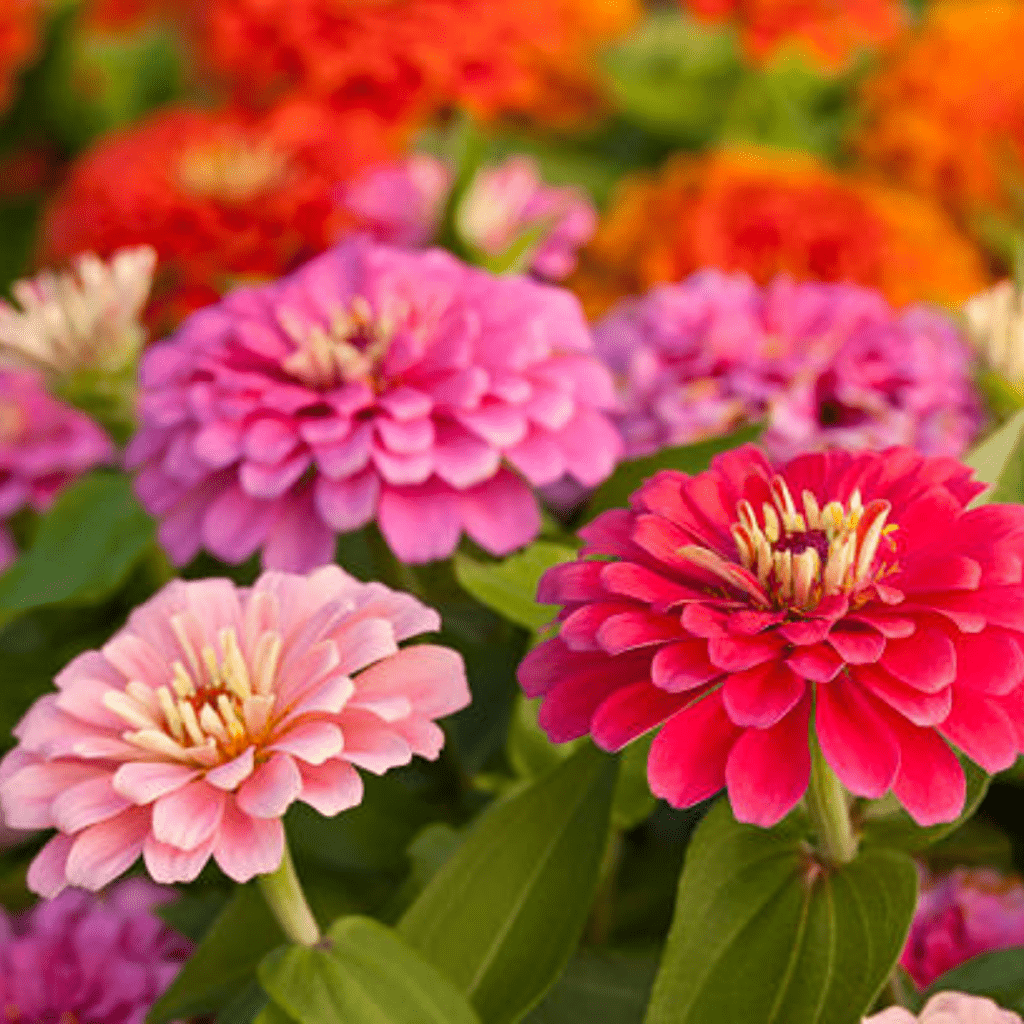
The Importance of Pollinators In Vegetable Gardens
If you want your vegetable plants to thrive and produce bountiful harvests, you need pollinators buzzing around your garden. Bees, butterflies, and other pollinating insects play a crucial role in transferring pollen from flower to flower, enabling plants to set fruit. Without them, your vegetable garden would be a lonely and unproductive place. That’s where zinnias come in!
Choosing Zinnia Varieties that Attract Pollinators
Zinnias are like a magnet for pollinators, with their vibrant colors and nectar-rich flowers. When selecting zinnia varieties for your vegetable garden, opt for those with single or semi-double flowers, as they are easier for pollinators to access. Varieties like “Benary’s Giant” or “Cut and Come Again” are highly attractive to bees and butterflies, ensuring a steady flow of pollinators in your garden.
Creating a Pollinator-Friendly Environment with Zinnias
To create a pollinator-friendly environment in your vegetable garden, scatter zinnia plants throughout. Aim for a mix of colors and heights to create a visually appealing display while also catering to different pollinator preferences. By providing these insects with an abundant supply of nectar, you’ll be rewarded with increased pollination rates and, ultimately, a more fruitful harvest!
Conclusion: Enhancing Your Vegetable Garden with the Best Flower Choices
Incorporating the right flowers into your vegetable garden not only adds beauty and charm, but also offers a range of benefits. Calendula brings medicinal properties to your fingertips, sunflowers improve soil fertility, and zinnias attract essential pollinators. With these flower choices, you’re not only nurturing your vegetable plants, but also creating a thriving ecosystem that will yield impressive results. So, why settle for a plain old vegetable garden when you can have a vibrant and flourishing paradise?
Incorporating flowers into your vegetable garden can be a game-changer when it comes to improving overall health and productivity. By carefully selecting the right flowers, considering their companion characteristics and the unique benefits they bring, you can create a harmonious and thriving ecosystem in your garden. From marigolds for pest control to nasturtiums for culinary delight, calendula for medicinal purposes, sunflowers for soil fertility, and zinnias for pollinator attraction, these flowers can be valuable allies in your vegetable gardening journey. So, don’t hesitate to experiment and find the perfect combination of flowers that will complement your vegetables and transform your garden into a vibrant and fruitful oasis. Happy gardening!
Resources: Here are some helpful resources for further information.
- 12 Flowers to Plant with Your Vegetables – By Planet Natural
- Companion Planting: Flowers to Grow with Vegetables – By Learning with Experts
- 6 Flowers to Grow in the Vegetable Garden – By Tenth Acre Farm
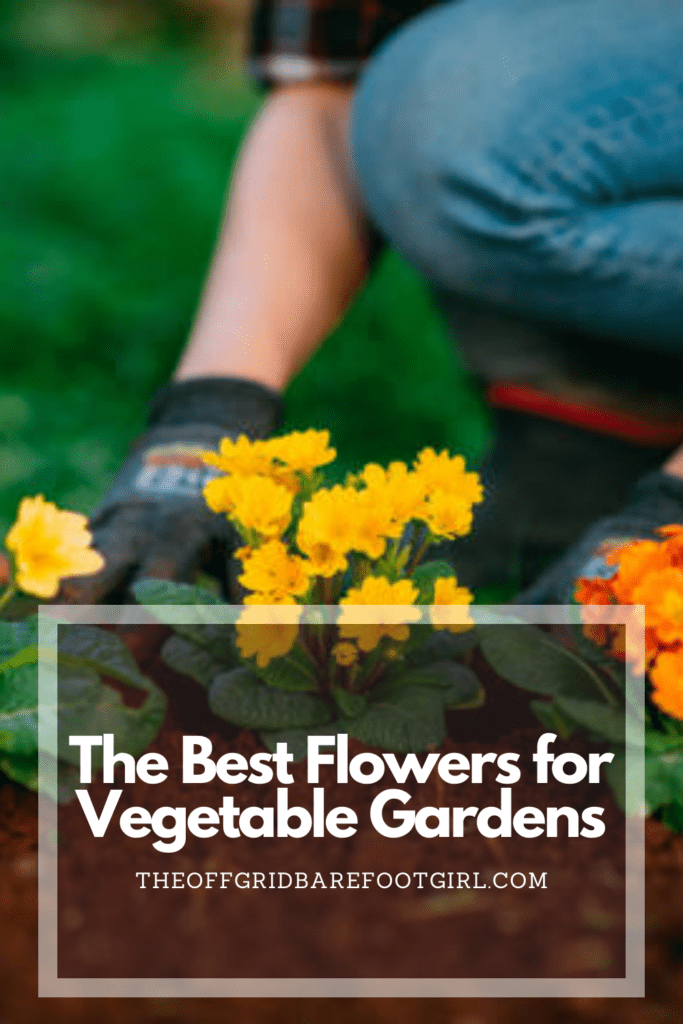
Frequently Asked Questions
1. Can any flowers be grown alongside vegetables in a companion planting setup?
Yes, many flowers can be grown alongside vegetables in a companion planting setup. However, it is important to consider the individual characteristics of each flower and its compatibility with the specific vegetables you are growing. Some flowers have repellent properties that can deter pests, while others attract beneficial insects or improve soil fertility. It is best to research and choose flowers that complement the growth and requirements of your vegetables.
2. How do I know which flowers are suitable for my climate and growing conditions?
Different flowers have varying preferences when it comes to climate and growing conditions. It is essential to consider factors such as sunlight requirements, temperature tolerance, and soil preferences when selecting flowers for your vegetable garden. Consult local gardening resources, extension offices, or experienced gardeners in your area for guidance on which flowers thrive best in your specific climate and growing conditions.
3. Can I consume flowers that are grown alongside my vegetables?
Yes, some flowers grown alongside vegetables can be consumed. Nasturtiums, for example, have vibrant edible flowers that add a peppery taste to salads and other dishes. However, it is crucial to research and ensure that the flowers you plan to consume are safe and grown without the use of harmful pesticides or chemicals. Some flowers may also have specific parts that are edible while others may be toxic, so it is important to exercise caution and verify the edibility of each flower before consumption.
4. How do I maintain flowers in my vegetable garden?
Maintaining flowers in your vegetable garden is similar to tending to any other garden plant. Regular watering, proper drainage, mulching, and occasional fertilization are important aspects of flower care. Additionally, it is essential to monitor for pests and diseases and take appropriate measures such as organic pest control methods or companion planting with pest-repellent flowers. Regular deadheading, pruning, and removing spent flowers will help promote continuous blooming and optimal growth.
Summary
I hope I have inspired you to grow flowers for your vegetable garden with these tips and products.
If you were encouraged by this post, I invite you to check out my FREE Printables Page for fun free printables, planners, and charts.
ENTER MY FREE Printables Page HERE
Here are some more of my gardening inspiration posts to check out!
How to Grow Garden Peas for a Bumper Crop
How to Grow Carrots for a Bountiful Harvest
Prep Your Garden for Spring Planting with These Expert Tips!
How to Grow a Prepper Garden to Survive and Thrive
The Best Garden Tools You Need for a Productive Season
Fastest Growing Vegetables for Your Survival Garden
How to Grow Marigolds As Pest Control In Your Vegetable Garden
Must-Have Tools for a Successful Balcony Vegetable Garden
How to Effectively Combat Powdery Mildew in Your Garden
The Best Tips for Organic Gardening
How to Release Ladybugs In Your Garden for Organic Pest Control
The Best Garden Snail Control Strategies
The Best Spring Vegetables to Grow in Your Garden
Seed Starter Mix: How To Make Your Organic Seed Starter Mix At Home
How to Grow a Productive Canning Garden
How to Plant and Grow a Salsa Garden
Easiest Heirloom Vegetable Seeds to Grow Now
How to Use the Hand Twist Claw Tiller: Tackling Tough Soil
Planning Your Garden: How to Plan a Vegetable Garden: Expert Green Thumb Tips!
Winterizing the Garden: How to Winterize Your Vegetable Garden: Step-by-Step Checklist
Mulching the Garden: How to Make Leaf Litter Mulch
Grow a Pumpkin Patch: How to Grow a Pumpkin Patch in Your Backyard
How to Grow a Fall Garden: 9 Best Fall Crops
Clever Ways to Incorporate Indoor Composting into Your Home
How to Start Composting for the Garden: A Step-by-Step Guide
The Ultimate Guide to Composting in Your Suburban Backyard
Why I Built A Survival Garden in My Backyard
16 Best Medicinal Herbs to Grow in Your Garden Now
Blessings,
The Off Grid Barefoot Girl

